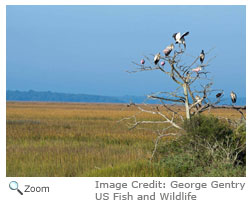Estuaries |
Good to Meet You
In the Zone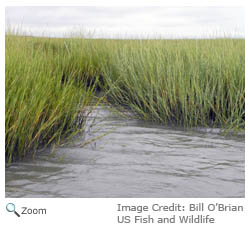 There are usually three zones in an estuary. The first zone is where the river begins to meet the saltwater. It has more fresh water than saltwater. Next is a middle zone where there is an almost equal mix of fresh and saltwater. The last zone is where the water begins to flow into the ocean, and is mostly saltwater. There are usually three zones in an estuary. The first zone is where the river begins to meet the saltwater. It has more fresh water than saltwater. Next is a middle zone where there is an almost equal mix of fresh and saltwater. The last zone is where the water begins to flow into the ocean, and is mostly saltwater. A Place to Call Home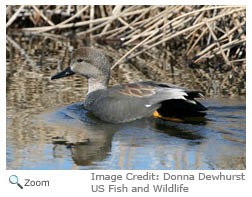 There are lots of different types of habitats in and near estuaries. Freshwater and salt marshes, sandy beaches, mud and sand flats, mangrove forests, river deltas, tidal pools and swamps can all be part of the estuary. There are lots of different types of habitats in and near estuaries. Freshwater and salt marshes, sandy beaches, mud and sand flats, mangrove forests, river deltas, tidal pools and swamps can all be part of the estuary. Something Rotten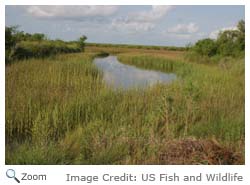 Estuaries are full of decaying plants and animals. This makes the soil of estuaries rich in nutrients. Because the soil is so rich, lots of different plants grow in estuaries. The plants attract lots of different animals to the estuary and those animals attract other animals to the estuary. Common animals include: shore and sea birds, fish, crabs, lobsters, clams and other shellfish, marine worms, raccoons, opossums, skunks and lots of reptiles. Estuaries are full of decaying plants and animals. This makes the soil of estuaries rich in nutrients. Because the soil is so rich, lots of different plants grow in estuaries. The plants attract lots of different animals to the estuary and those animals attract other animals to the estuary. Common animals include: shore and sea birds, fish, crabs, lobsters, clams and other shellfish, marine worms, raccoons, opossums, skunks and lots of reptiles.
Rock-a-Bye BabyEstuaries are often called the nurseries of the ocean. Many fish species lay their eggs in estuaries. The abundant plant life in estuaries provides a safe place for young fish to live.For the Birds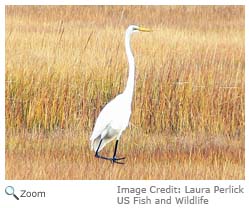 Birds are also abundant in estuaries. Between the plants and the fish and other animal life, there's lots for them to eat. Many migratory birds like the Canada Goose use estuaries as resting and feeding places when they migrate. Long-legged birds like sandpipers, great blue herons, great egrets, and green herons are common in estuaries. Their long legs are perfect for wading in the water and their long toes make walking in the mud easy! Their bills are adapted for catching and eating fish, worms, crabs and other invertebrates that live in the estuary. Birds are also abundant in estuaries. Between the plants and the fish and other animal life, there's lots for them to eat. Many migratory birds like the Canada Goose use estuaries as resting and feeding places when they migrate. Long-legged birds like sandpipers, great blue herons, great egrets, and green herons are common in estuaries. Their long legs are perfect for wading in the water and their long toes make walking in the mud easy! Their bills are adapted for catching and eating fish, worms, crabs and other invertebrates that live in the estuary.
For Your Protection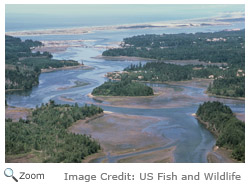 Estuaries are more than just a place for animals and plants to live. They also help control pollution. Water from upland areas often carries sediment and pollutants. The marshy land and plants in estuaries filter these pollutants out of the water. The plants in estuaries help prevent shoreline erosion. Estuaries also protect inland areas from flooding and storm surges. When a storm hits, estuaries often absorb water from the storm before it can reach upland areas. Estuaries are more than just a place for animals and plants to live. They also help control pollution. Water from upland areas often carries sediment and pollutants. The marshy land and plants in estuaries filter these pollutants out of the water. The plants in estuaries help prevent shoreline erosion. Estuaries also protect inland areas from flooding and storm surges. When a storm hits, estuaries often absorb water from the storm before it can reach upland areas. |
Show Me the Money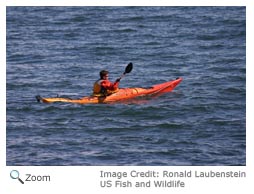 Estuaries play an important role in the U.S. economy. They attract tourists who like fishing, boating and other water sports. They are an important part of the shipping industry because there are many industrial ports located in estuaries. Estuaries are also a critical part of the commercial fishing industry. It is estimated that over 75 percent of all the fish that are caught by commercial fishing operations lived in an estuary for at least part of their life cycle. Estuaries play an important role in the U.S. economy. They attract tourists who like fishing, boating and other water sports. They are an important part of the shipping industry because there are many industrial ports located in estuaries. Estuaries are also a critical part of the commercial fishing industry. It is estimated that over 75 percent of all the fish that are caught by commercial fishing operations lived in an estuary for at least part of their life cycle.
Estuaries in Danger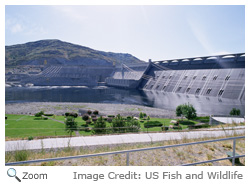 Pollution from upland areas often damages estuaries. Dams can block natural stream and river routes and cut off freshwater from estuaries. When that happens, the fresh and saltwater balance of the estuary is changed and the estuary can be seriously damaged. Development can damage or even destroy estuaries. In the past, many people thought estuaries were wasted land and many estuaries where filled in and built on. Today, we are much more aware of the important role estuaries play in the environment and many people are working to save these areas. Pollution from upland areas often damages estuaries. Dams can block natural stream and river routes and cut off freshwater from estuaries. When that happens, the fresh and saltwater balance of the estuary is changed and the estuary can be seriously damaged. Development can damage or even destroy estuaries. In the past, many people thought estuaries were wasted land and many estuaries where filled in and built on. Today, we are much more aware of the important role estuaries play in the environment and many people are working to save these areas.
An Estuary Near YouThere are many estuaries in the United States. You might even live near one! Check out the links below to find out more about an estuary near you and what you can do to help preserve these important ecosystems! Alabama |

